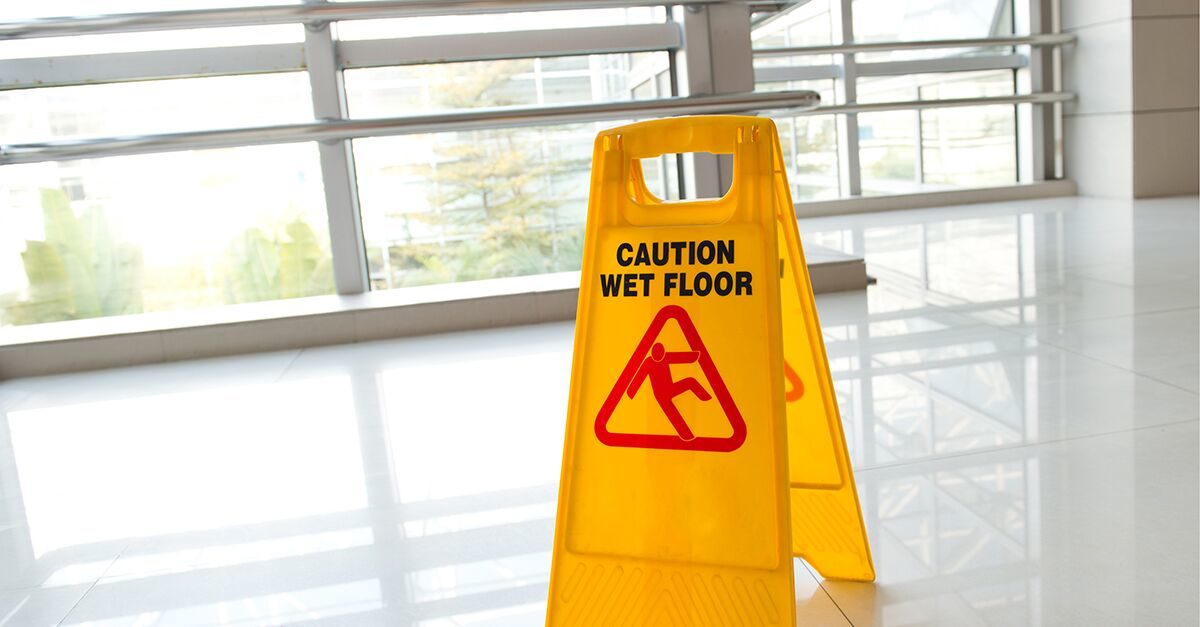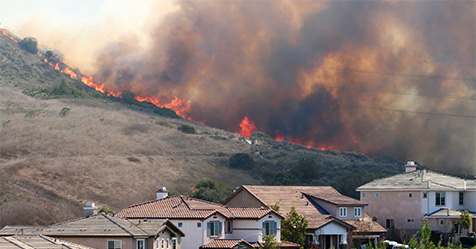It is unfortunate that many professionals in our industry have been taught to believe the subject of health and safety is all about compliance with regulations.
When a facility service provider abides by prescribed regulations, the action is seen as something that needs to be done in order to follow the law. However, simply remaining compliant does not teach employers how to develop a health and safety program, nor does it offer suggestions on how to create a culture of health and safety in the workplace.
It has been said the establishment of a safety regulation is usually the result of a person losing their life. In other words, many regulations are created in response to a situation that has caused a person to die or become seriously injured or ill and to ensure that situation and outcome do not occur again.
However, there is more to health and safety than just following the law. There is a philosophy of health and safety based on the recognition, assessment, and control of hazards; this philosophy is easy to remember with the acronym REACH, although we won’t discuss each of the below steps in this particular order.
R stands for Recognition
E stands for Evaluation
A stands for Assessment
C stands for Control
H stands for Hazards.
What Defines a Hazard?
In occupational health and safety jargon, a “hazard” is anything with the potential to cause death, harm, illness, or damage to people or property. Hazards have many contributing factors. The principal factors are people, equipment, materials, environment, and process. There are many processes and activities that also are known to be hazardous, such as those originating from machines, energy, confined space, material handling, work practices, ergonomics, and chemical/biologicals.
Recognizing a Hazard
It is important for an employer to create a culture with-in the workplace where all supervisors and workers are continually assessing their worksites for hazards and are aware of what chemicals and processes are hazardous. In our industry, this is critical since our sites often change and the changes may progress from hour to hour and day to day. For example, the nature of cleaning, maintenance, and restoration can result in workers attending sites that have been altered in ways that create every possible form of hazardous conditions, such as wet and slippery floors, collapsing ceilings, biological hazards, and electric shock hazards, to name a few.
There must be a continual process of hazard assessment on these worksites. This can help to identify hazards that lurk in a workplace. The U.S. Department of Labor’s Occupational Health and Safety Administration (OSHA) requires all employers to perform a hazard assessment by a qualified person and have it certified in writing by their representative.
Job Hazard Analysis
Another way to develop a safe workplace is to conduct a job hazard analysis. A job hazard analysis is a systematic evaluation of a task being performed by a worker. The analysis should take place at a site where the job task would normally occur, with a person who normally performs the task, and with the normal tools and materials they would use to perform the task.
The work should be broken down into segments. Then each segment should be evaluated to determine any hazardous conditions or potentially hazardous conditions that are present or may occur. If the job hazard analysis is performed on a site where there are many possible scenarios due to changes in process, material types, or environment, then a change analysis would be added to the inspection. In other words, as you look at each task you would ask: “What if x were to occur?”
A good example of change analysis is performing a job hazard analysis on changing a vehicle tire. You would break down the tasks like so:
- First, take out the spare tire, then the jack.
- Raise the vehicle.
- Loosen the lug nuts and remove them.
- Remove the tire.
- Put on the spare.
- Tighten the lug nuts.
- Lower the vehicle, and so on.
During each step, you should ask yourself questions, such as: What if this was a different vehicle type? What if this was on a different road? What if this was at a different time of day? What if this was performed while it was raining or windy? What if this were being done on a sloped gravel shoulder? This should help to prepare for different scenarios.
Job Safety Analysis
After your job hazard analysis is finished, tabulate the hazardous conditions and now perform a job safety analysis. The job safety analysis is the process of taking the information gathered and making the necessary changes in the company’s standard operating procedures by adding safe work practices to them and the company’s safety plan.
Communicating Hazards
All employers are required to have health and safety programs that address issues such as hazard identification, emergency response, and bloodborne pathogens. It is also important for companies to have forms and checklists to reinforce and maintain their health and safety systems.
The foundation of formally communicating potential chemical hazards is often referred to as a written HAZCOM program—all companies are required by law to have one. Most countries in the world, including the United States, have adopted the Global Harmonized System (GHS) as a means of communicating chemical hazards to workers and others who face exposure to chemicals in the workplace. The GHS uses product labels, safety data sheets (SDS), and worker education and training as the means for communicating the hazards of a chemical product to materially interested parties.
The GHS has simplified the process of hazard communication with simple signal words, hazard statements, pre-cautionary statements, and pictograms that are placed on the label of each chemical product in the workplace. Most information the worker needs to ascertain the hazards of a product can now be found on the supplier label.
Setting Up and Prioritizing Controls
Most serious hazards on well-established work sites already have some sort of safety control placed on them. Workers must ensure that the controls in place have not been com-promised when entering a worksite and assess the risk of all identified hazards from the hazard assessment.
Hazards are to be controlled at the source as much as possible; the worker’s PPE is viewed as a means of last resort. It is recommended that hazard controls are implemented following the below hierarchy.
Control Type No. 1: Technical Hazard Controls
First eliminate the hazardous substance or process; if that is not practical, substitute the chemical or process with a less hazardous one. If eliminating or substituting the hazard is not possible, then the next step would involve installing engineering controls around the hazardous item to reduce the danger to the worker and the environment. Engineering controls minimize the hazards at their source. Examples would include:
- Building barriers/containments around contaminated sites
- Placing areas under negative pressure to prevent cross- contamination
- Installing air filtration devices to rid the air of contaminants
- Installing mufflers on loud items
- Insulating hot lines or pipes.
Control Type No. 2: Administrative Hazard Controls
The next step in implementing hazard controls is the implementation of administrative controls, which include safe work practices. Administrative controls in our industry are policies the employer creates for the purpose of reducing risk. Good examples of administrative controls in our industry are:
- Scheduling work to be done when building occupants are not present
- When using hot/humid/full personal protective equipment (PPE), schedule work assignments in short segments with many rest periods
- Implementing wet processes versus dry process
- Purchasing products for safety versus recognition factors.
The best way to develop safe work practices is to have the workers involved with their development. There is no one who knows the hazards of the workplace, equipment, and company processes than the workers who perform the tasks. Examples of safe work practices would include procedures for properly dealing with:
- Biological hazards
- Sharps
- Media blasting
- Various cleaning protocol
- Working at heights.
Control Type No. 3: PPE Controls
At the bottom of the hierarchy of controls is PPE. This is because PPE does nothing to minimize the hazard at its source, such as by administrative controls or primary hazard controls. This can be a bit confusing for many in our industry because the initial hazard assessment is meant to determine the required PPE for the worker.
However, it’s important to consider that workers, depending on the task at hand, are entering sites that have changed, and will continue to change, until they return to a preloss condition or until the cleaning project is complete. This is why constant evaluation is imperative until completion of the project. After the initial hazard assessment and placement of hazard controls, PPE should be worn as a precaution in case one of the other hazard controls is inefficient, insufficient, or impractical to be able to render the hazard harmless.
It is highly recommended that all elements of a company’s hazard assessment and controls be incorporated in a company safety program. Other elements that should be incorporated into a health and safety program include elements on management leadership, worker training, and emergency response. No safety program would be complete without a means of evaluating its effectiveness and updating the program on a regular basis.
Accident and Incident Investigations
The last element to building a culture of health and safety in a workplace is accident and incident investigations. An accident is when there is a release of energy that causes harm, whether to an animal, person, or property. An incident is a release of energy that did not cause harm or damage but had the potential to do so. Incidents are often referred to as “near misses.” The reason why we investigate accidents is to determine the root cause or initiatory phases of an event.
This is why we investigate near misses the same way. We want to know what the initiatory phases were leading up to the incident that could have caused serious harm. In identifying what caused the accident or incident, we can then draw up safe work practices that will prevent or minimize the chance of this accident or incident occurring again.
Put it into Practice
The elements outlined in this article are all essential to any company’s way of doing business. If all these elements are put into practice, the company will save money in down-time and workers’ compensation payments, experience less worker turnover, and have a more productive staff. It is the right thing to do and will encourage both employers and employees to work toward the common cause—a safer workplace.




